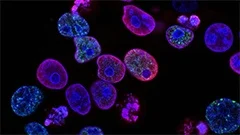Introduction
The nucleus is a membrane-bound organelle located within eukaryotic cells. It serves as the main control center of the cell, housing the genetic material and regulating various aspects of cell function. This comprehensive guide aims to provide an in-depth exploration of the nucleus, its structure, functions, and significance in cellular biology.
The Structure of the Nucleus
Nuclear Envelope
The nuclear envelope is a double membrane that surrounds the nucleus. It comprises two lipid bilayers separated by a narrow space called the perinuclear space, where a network of proteins known as the nuclear pore complexes (NPCs) are embedded. These NPCs facilitate the transport of molecules between the nucleus and cytoplasm.
Nucleoplasm
The inner compartment within the nuclear envelope is referred to as nucleoplasm. It contains various components, including chromatin, the nucleolus, and various proteins involved in gene expression, DNA replication, and other crucial cellular processes.
Chromatin
Chromatin is a complex of DNA, histone proteins, and non-histone proteins that condense and package the genetic material within the nucleus. The organization of chromatin can range from loosely coiled euchromatin to tightly packed heterochromatin, depending on its transcriptional activity.
The Nucleolus
The nucleolus is a densely packed structure found within the nucleus that serves as the site of ribosome biogenesis. It consists mainly of RNA and proteins involved in rRNA processing, synthesis, and assembly into ribosomes.
The Functions of the Nucleus
Gene Expression
The nucleus plays a central role in gene expression, which includes transcription (the process of copying DNA into mRNA) and translation (the process of synthesizing proteins from mRNA). Various enzymes and regulatory proteins are involved in these processes, ensuring the correct and timely production of proteins.
DNA Replication
DNA replication occurs within the nucleus during the S phase of the cell cycle. It involves the unwinding and copying of the DNA double helix to produce identical sister chromatids, ensuring that each daughter cell receives a complete set of chromosomes after cell division.
Chromosome Segregation
The nucleus is responsible for the proper segregation of chromosomes during mitosis and meiosis. This ensures the accurate distribution of genetic information to daughter cells, maintaining the integrity of the genome.
Conclusion
The nucleus is a critical organelle in eukaryotic cells, orchestrating gene expression, DNA replication, and chromosome segregation. Understanding the structure and functions of the nucleus provides insight into cellular biology, development, and disease processes. Future research will continue to uncover new aspects of nuclear function and contribute to our overall understanding of eukaryotic cells.
QCM : Teste tes connaissances !
Penses-tu tout connaître de ce cours ? Ne tombe pas dans les pièges, entraine-toi à l'aide des QCM ! eBiologie recense des centaines de questions pour t'aider à maîtriser ce sujet.
Pour aller plus loin...
Ces cours peuvent t'intéresser
Créez un compte gratuit pour recevoir des cours, QCM et des conseils pour réussir vos études !
eBiologie met à disposition plusieurs eBooks contenant des séries de QCM (5 fascicules offerts pour chaque inscrit).







